People in the Czech Republic can now shop at hardware and bicycle stores, play tennis and go swimming. Italians can visit bookshops and laundries, while younger students are returning to classrooms in Denmark. Austria has reopened smaller stores and Germany will follow suit next week.
These nations are among the first in the West to start feeling their way gradually out of the limits on daily life imposed by governments to curb the spread of the coronavirus.
Others will want to see what lessons can be learned as they too eye an exit route from lockdown amid growing social and economic pressures at home.
Chancellor Angela Merkel announced Wednesday that Germany, Europe’s biggest economy, was ready to start carefully scaling back some restrictions from next week, though she acknowledged that “we have little room to maneuver.” Yet little by little, daily life in some parts of the continent is starting to get moving again.
For professional athlete Irena Gillarova, from the Czech Republic, the easing of the lockdown last week meant she could return to training at the Juliska stadium in Prague for the first time since the country locked down.
“It was great, honestly. I was full of excitement and I feel great,” the javelin thrower told CNN on Friday. “These two weeks at home helped me to appreciate my job even more than before and not take it for granted.”
The athletes have a schedule to ensure only a certain number of people are at the stadium at once. “I felt 100% safe,” the 28-year-old said. “I feel the system is pretty good and we are trying to be smart about it. We are all taking it responsibly.”
Dr. Peter Drobac, a global health expert at the Oxford Saïd Business School, told CNN that those countries now easing their restrictions were “important and hopeful examples” for the West.
“We still have a lot of learning to do about how we are going to come out of lockdowns safely and effectively,” he said.
Any loosening of limits will carry risk. The World Health Organization’s Regional Director for Europe, Dr. Hans Kluge, warned last week that the situation in Europe is still “very concerning” and insisted “now is not the time to relax measures.”
Europe “remains very much at the center of the pandemic,” he said, with seven of the top 10 most affected countries globally located on the continent.
And a study based on China’s outbreak, published in medical journal The Lancet, has suggested that coronavirus lockdowns across the globe should not be completely lifted until a vaccine for the disease is found.
‘In a much better place’
According to Drobac, the countries preparing to ease restrictions had something in common: they were among the first in Europe to implement lockdowns or severe social distancing measures and had rapidly scaled up coronavirus testing.
“They had these things in place and as a result they are already past the peak of infections there,” he said. The numbers of coronavirus-related deaths in these nations are in the tens or hundreds, rather than the thousands, he said, and “they are in a much better place because of proactive action.”
What they’ve announced about how they plan gradually to relax restrictions “looks reasonable and it looks smart,” Drobac said.
Related stories
“It’s a very gradual process and they will be able to learn and track things in terms of new infections. But if they ease up too much and infections start to spike, they can pull back a bit. That’s how every country is going to have to do it.”
Other countries looking to follow in their path need to meet three general criteria, he added, especially if they are to avoid a second wave.
Firstly, they need to have “bent the curve” and seen a consistent reduction in the number of new cases, he said. Secondly, their health care systems need to be able to cope without resorting to crisis measures such as emergency hospitals.
Thirdly, they need a system in place for mass testing, contact tracing and isolation, so that sick people can be isolated early before they infect others, he said, “which is public health 101 and what I wish we were all doing from the beginning.”
Germany to reopen stores but extend contact ban
Germany, which rapidly rolled out widespread testing at the outset of its outbreak, will begin to open back up from next week. Stores with a sales area of 800 square meters – and plans to maintain hygiene and prevent lines from forming – can reopen from Monday.
Schools with hygiene plans in place will gradually reopen from May 4, with priority given to primary and secondary pupils in final years, while daycare centers will remain shut. Other social distancing measures, along with bans on large public events, will remain in place.
Germany on Wednesday recorded its highest daily death toll of 285, bringing the country’s total to 3,254, but also marked one of the lowest increases in cases to date. The head of the country’s center for disease control and prevention said Tuesday that there were “positive trends” in Germany’s fight against the virus.
Lothar Wieler said efforts must continue, and citizens needed to remain disciplined. He warned that there was no clear sign that the numbers of infections were decreasing, and pointed out that there were strong regional differences within Germany.
Italy takes it slow
Bookstores, laundries, stationery stores and children’s clothing stores were among the businesses allowed to reopen in Italy on Tuesday after a government decree signed by Prime Minister Giuseppe Conte on April 10.
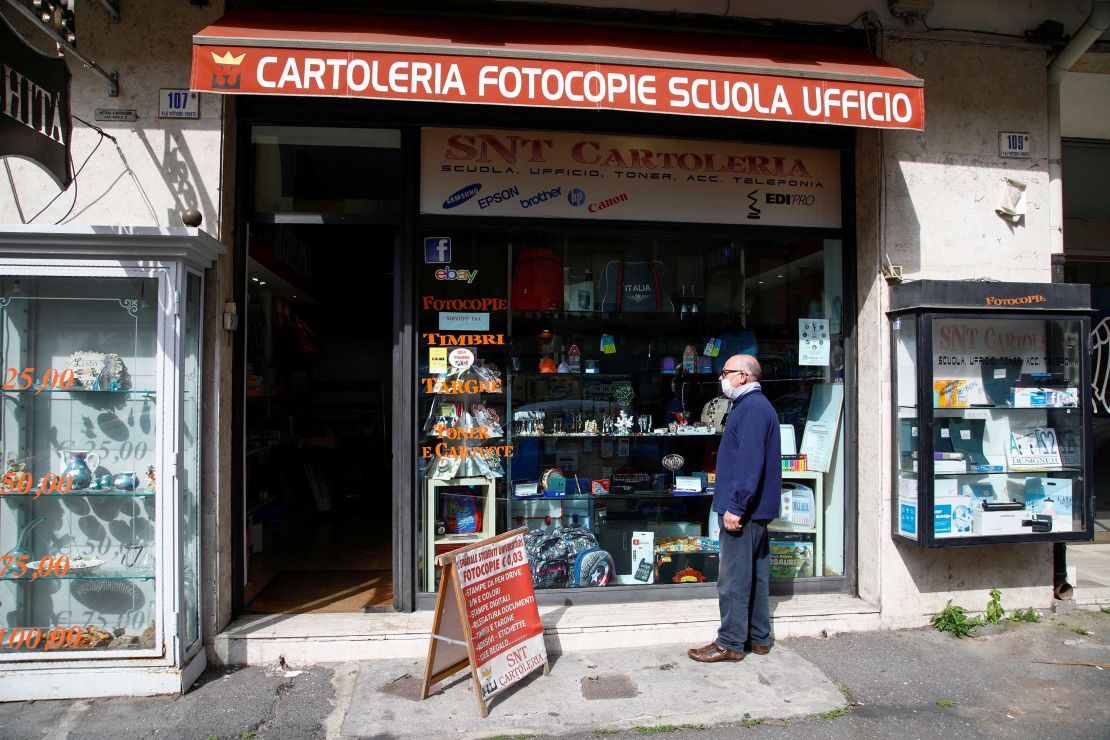
The list of permitted activities was expanded to include forestry, computer manufacturing, landscape care and maintenance, hydraulic works and paper and cardboard production.
The changes are a preview of wider openings due to take place during “phase 2” of the three-phase plan to bring Italy back to normal, which will start sometime after May 3.
Gianni Rezza, Director of Infectious Diseases at the National Health Institute (ISS), said in a press briefing Monday evening that the death rate and the epidemic curve in Italy shows “positive signals that need to be consolidated in time.”
Some areas of the country have decided to delay lifting restrictions.
In Lombardy and Veneto, the regions hardest hit by the pandemic, bookstores and stationery stores are not allowed to reopen. In Lazio, the region which includes Rome, bookstores can open from April 20.
Any business that does reopen must respect rules designed to limit the spread of coronavirus: making hand sanitizer available, enforcing the use of masks in enclosed spaces, and using disposable gloves to handle food and drink.
The government decree also mandated a series of hygiene measures including handwashing, avoiding hugs and handshakes, keeping a distance of at least a meter from other people, sneezing and coughing into a handkerchief and cleaning surfaces with chlorine or alcohol sanitizers.
300,000 return to work in Madrid
Many non-essential employees across Spain returned to work after the Easter weekend, with 300,000 estimated to have gone back in the Madrid region, according to the regional government. Tuesday marked one month since Spain’s state of emergency was declared on March 14.
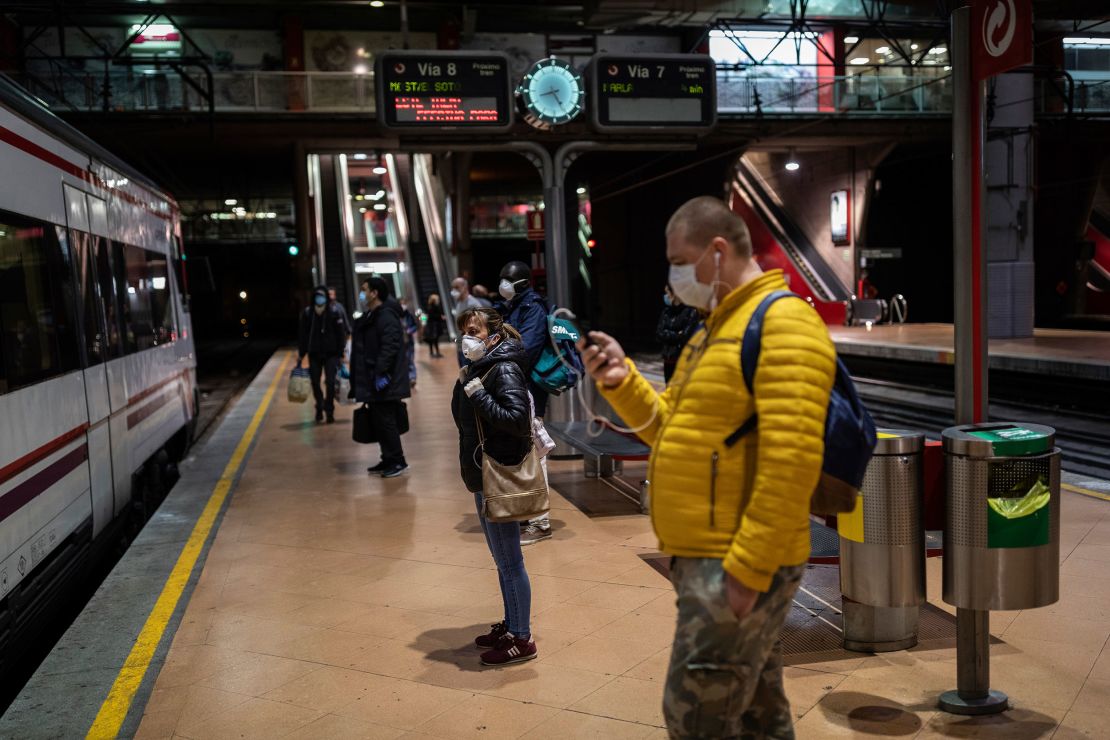
Construction and other industries have been allowed to restart, but non-essential stores, bars and restaurants remain closed.
The International Monetary Fund on Tuesday forecast an 8% contraction in Spain’s GDP in 2020, to be followed by growth of 4.3% in 2021.
Spain’s General Workers Union, UGT, had raised concerns over the return to work, calling on employers to be responsible for providing personal protection equipment.
Catalan regional President Quim Torra called the decision to allow the return of workers “irresponsible and reckless.” A number of other regions, opposition parties, and scientists also opposed the relaxation of restrictions.
Spanish police are distributing more than 10 million masks to commuters at metro, bus and train stations.
Denmark to speed up easing of restrictions
Denmark is speeding up its decision to lift Covid-19 restrictions after the latest numbers of new cases proved lower than expected, the Danish Prime Minister said.
At a news conference on Tuesday, Mette Frederiksen said the country would expand “phase 1” of its re-opening, beginning Wednesday with the partial reopening of schools for younger students.
The PM will discuss which other restrictions should be eased with other government leaders on Wednesday evening.
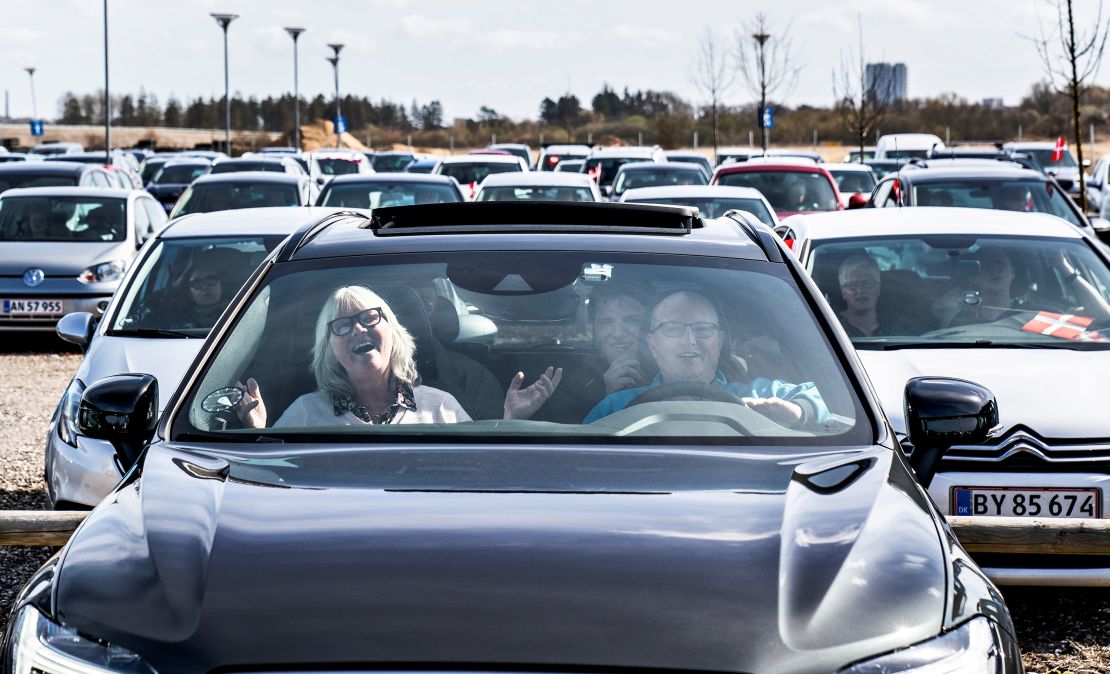
The government had previously extended a ban on gatherings of more than 10 people until May 10 and said churches, cinemas and shopping centers would remain closed. All festivals and large gatherings have been banned until August.
“This will probably be a bit like walking the tightrope,” Frederiksen told a media briefinglast week, according to Reuters news agency. “If we stand still along the way we could fall and if we go too fast it can go wrong. Therefore, we must take one cautious step at a time.”
The nation of 5.8 million was among the first European to close its borders on March 13. In that same week, it closed schools, cafes and shops, as well as banning gatherings of more than 10 people and visits to hospitals.
“The only way we have avoided the tragic scenarios in places like Italy and the US is because we [Denmark] acted quickly,” Frederiksen said on Danish national TV.
Czech shops reopen
The Czech Republic moved swiftly to impose restrictions on travel, ban large events and close non-essential businesses after declaring a state of emergency on March 12. Unusually in Europe, it also required its 10.7 million people to cover their faces when outside the home from 19 March.
Those strict containment efforts appear to be paying off, as the government has now announced it is extending its relaxation of some restrictions.
The Czech government said on April 6 that people would be able to exercise alone without masks, and that shops such as hardware and bicycle stores would be allowed to re-open. Outdoor sports facilities have also reopened.
From next Monday, students will begin a phased return to colleges and schools, mostly for one-on-one consultations. High school graduation and entry exams will be held after June 1. High schools are not expected to fully open until September 1.
The government will allow farmers’ markets and car dealerships to reopen, and weddings will be permitted, provided fewer than 10 people attend.
From May 25, restaurants, snack bars, pubs and wine shops offering goods for immediate consumption will be allowed to open if they have an outdoor patio or sell takeout food and drink. Museums, galleries and zoos can open their outdoor exhibits from the same date, and hair and beauty salons will also be allowed to reopen.
From June 8, all retail stores, including those in shopping centers, all restaurants, hotels and other accommodation will be allowed to reopen.
According to the latest numbers from the Ministry of Health, the Czech Republic has 6,151 confirmed cases of coronavirus; 161 people have died.
Essential travel outside the Czech Republic is now also allowed.Gillarova, the athlete, remains hopeful that international competition will restart at some point this year – perhaps with the European Athletics Championships in Paris this August – after the disappointment of the Olympics being pushed back to 2021.
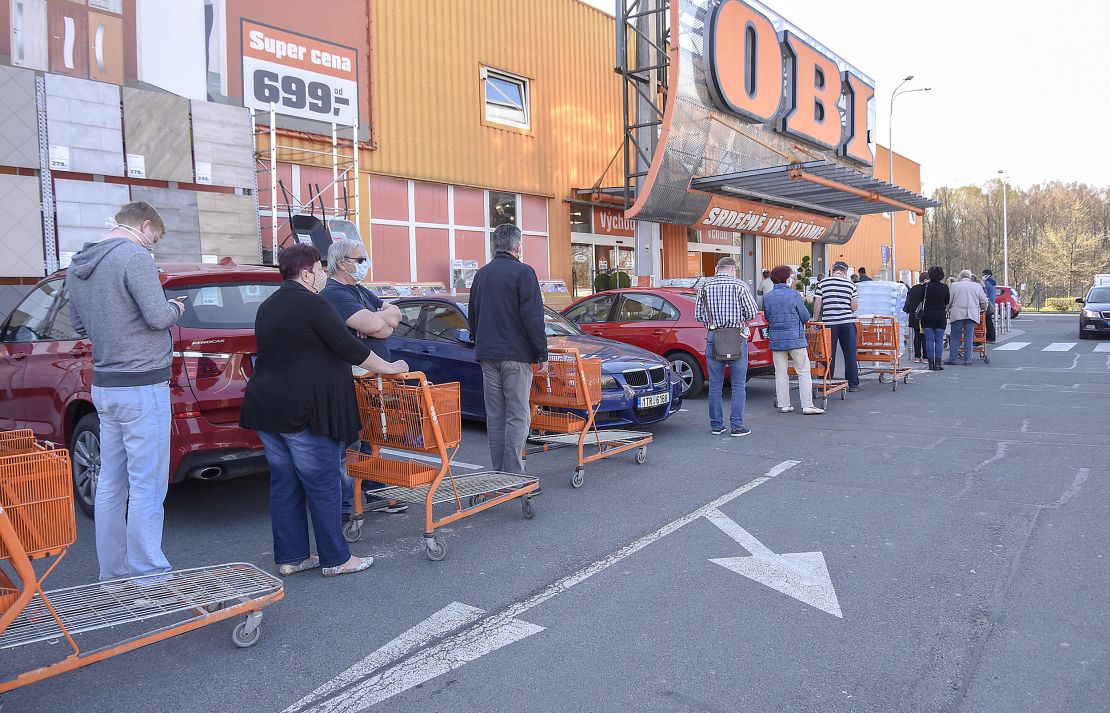
Austria: Step-by-step approach
Neighboring Austria, where the popular winter sports resort of Ischgl, in Tyrol province, was linked last month to the spread of coronavirus to other parts of Europe, is taking a different approach as it eases restrictions.
The city of Salzburg has lifted confinement restrictions for eight out of its nine municipalities, Salzburg’s state media center announced Tuesday. In the community of Altenmarkt, the confinement was extended by two days, because of a number of cases in a retirement home.
Austrian Chancellor Sebastian Kurz announced last week that the country was planning a “resurrection” after Easter, by reopening some smaller shops, hardware and garden stores. But people will have to wear masks to supermarkets and on public transport.
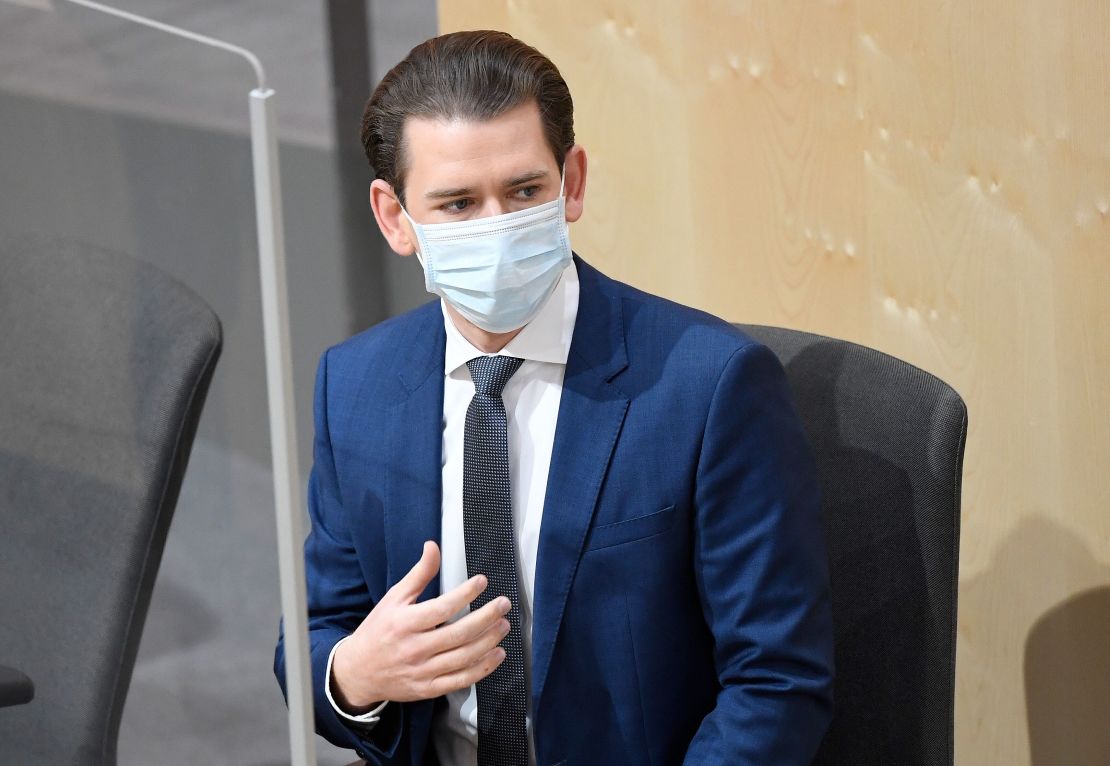
From May 1, all stores, shopping centers and hairdressers will open; restaurants and hotels will open from mid-May at the earliest. This will happen “under strict security conditions,” said Kurz.
He cautioned that the danger is not yet over, citing Singapore, which saw a resurgence in cases. “Those who believe that the situation is under control are wrong,” he said.
The government will decide at the end of April whether to extend home-schooling beyond mid-May and no major events will be held until the end of June. “Our aim has to be to step-by-step eliminate the disease,” Kurz said.
Last week, Austria carried out testing of 1,500 people across the country in an attempt to gauge how widely the coronavirus had spread. The study found less than 1% of the non-hospitalized population were infected. Previously, Austria had focused testing on those who were seriously ill.
The number of confirmed coronavirus cases in Austria had reached 14,460 as of Tuesday, the country’s health ministry said. The death toll stood at 384.
Norway: Cautious optimism
Norway is taking a different approach again, prioritizing reopening schools as it eases containment measures introduced in mid-March.
It will begin to scale back its lockdown measures from April 20, Prime Minister Erna Solberg said, when kindergartens will start to reopen. A week later, schools will reopen for pupils in grades one to four.
“Our ambition is for all students to somehow get back to school before the summer,” Solberg said.
The government believes that the latest statistics provide a basis for “cautious optimism,” indicating that the infection rate has leveled off, the prime minister said.
“By working together, we have got the virus under control, and can start to lift restrictions little by little. We will do this together, cautiously, and taking our time.”
According to the Norwegian Institute of Public Health, Norway had 6,677 confirmed Covid-19 cases, and 130 deaths, as of Wednesday.
Switzerland is also considering a way out of confinement. Despite extending social distancing restrictions to April 26, its government has indicated that other measures could be relaxed later this month – including border controls, school closures and bans on gatherings – if the virus’ spread is kept in check.
The Swiss Federal Office for Health said Tuesday that 25,834 people had tested positive for coronavirus (an increase of 254 in 24 hours), and 900 had died.
As these countries and others walk a tightrope between protecting public health and keeping their economies alive, it’s clear many pitfalls lie ahead.
The WHO’s Kluge stressed that it was “the time to once again double and triple our collective efforts” to suppress the virus.
“To think we are coming close to an end point would be a dangerous thing to do,” he said. “Any shift in our response strategy, relaxing of lockdown status or physical distancing measures, requires very careful consideration.”
CNN’s Ivana Kottasova, Tomas Etzler, Sarah Dean, Max Ramsay, Livia Borghese, John Fiegener, Laura Perez Maestro, Al Goodman, Nadine Schmidt, Stephanie Halasz, Arnaud Siad, Seb Shukla, Niamh Kennedy, Vasco Cotovio and Ingrid Formanek contributed to this report, as did journalist Susanne Gargiulo.
























